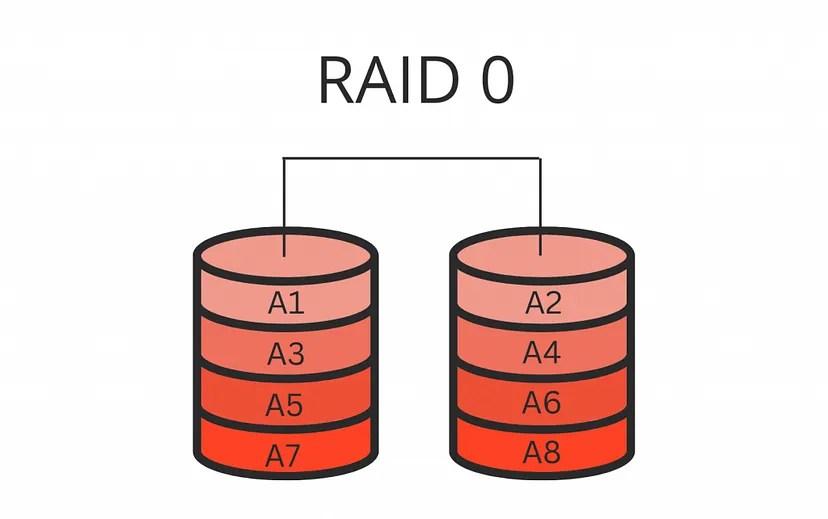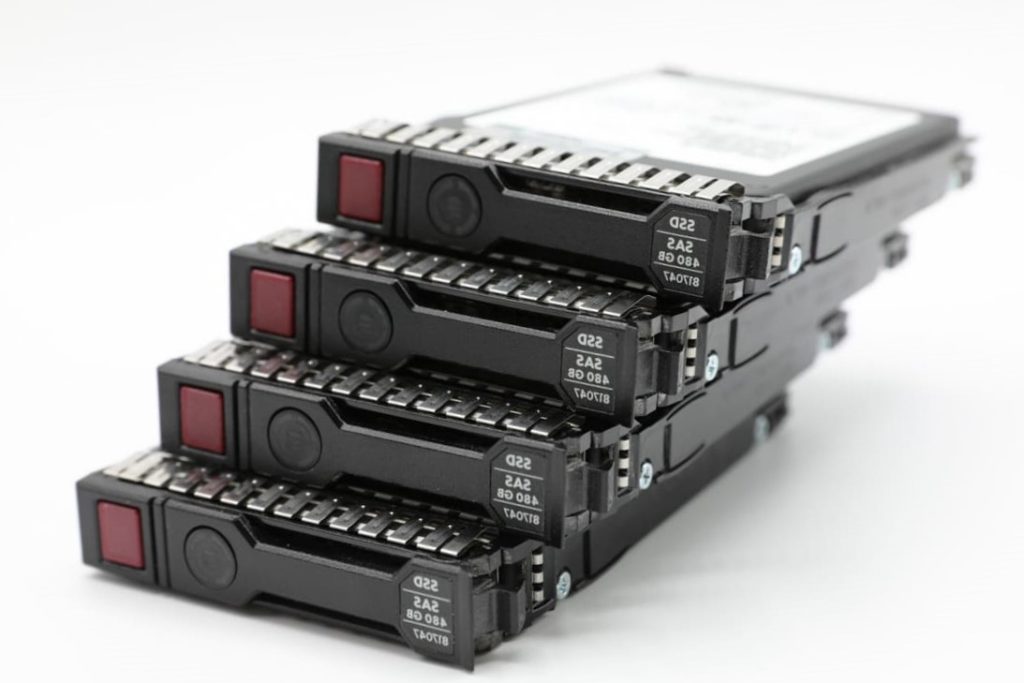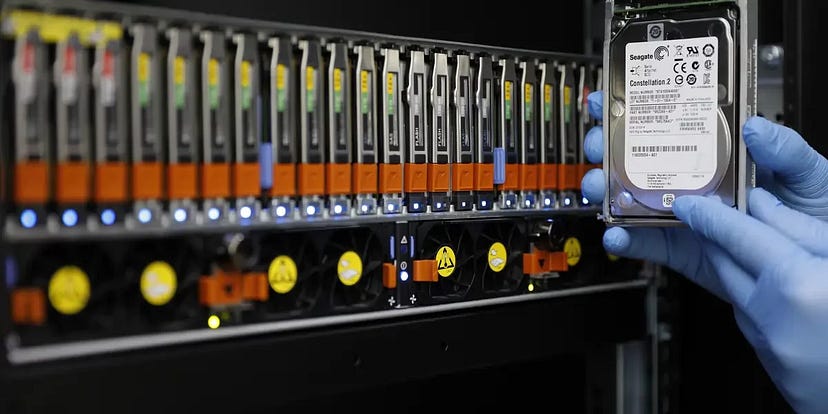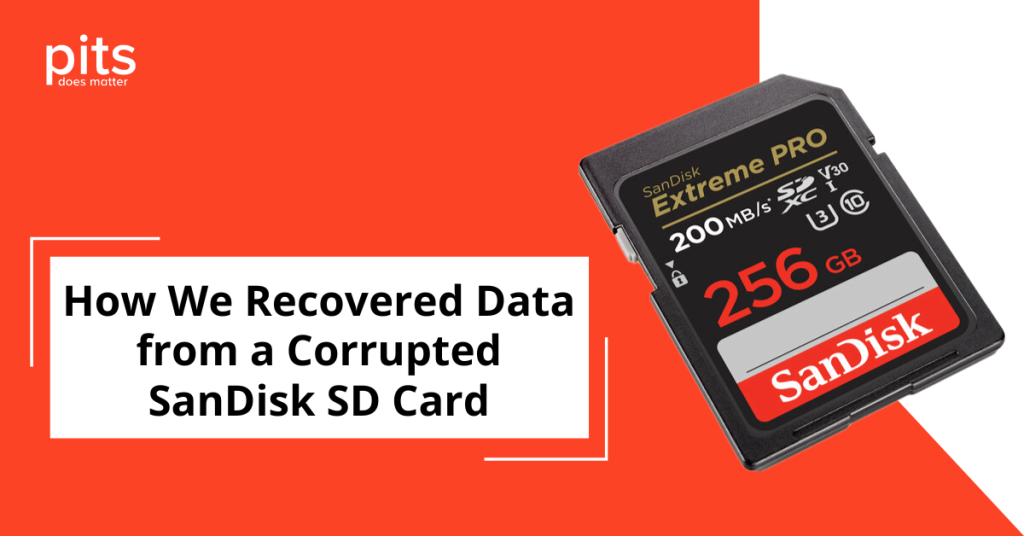RAID 0 is a RAID configuration that uses multiple disks (e.g., hard drives) to distribute data across them in a striped way. The RAID 0 level does not provide any redundancy or fault tolerance. Instead, its primary goal is to increase IO speed by allowing data to be read from and written to multiple drives simultaneously.
RAID 0 is commonly used in applications that require high-speed data access, such as gaming, video editing, and other tasks that involve large file transfers and real-time processing.
Internal Structure
A RAID 0 array consists of at least two disks, but it can scale up to any number of drives as required. As we learned earlier, the data is distributed evenly across the disks in the array, allowing multiple read and write operations to be performed simultaneously. This parallelism significantly enhances the overall performance of the array, making RAID 0 particularly appealing in scenarios where speed is a top priority.

Space Efficiency
Another notable advantage of RAID 0 is its efficient use of storage space. There’s no parity or any other protection feature used in this RAID configuration. This means that the total capacity of a RAID 0 array is the sum of all the drives’ capacities.

Use the following formula to calculate the total capacity of the RAID 0.
C = C1 + C2 + C3 + … + CN
For example, if you have two 1 TB drives in a RAID 0 array, the total usable capacity will be 2 TB. This means you get the full capacity of all the drives without any overhead from redundancy or parity data.
No Data Protection
While RAID 0 excels in performance and space efficiency, it comes with a significant trade-off: the absence of redundancy. Since there is no data mirroring or parity information stored in RAID 0, a single drive failure can result in the loss of all data in the array. Therefore, it is crucial to acknowledge that RAID 0 is not the best choice for applications where data integrity and fault tolerance are paramount.
Advantages of RAID 0
- Increased Performance: RAID 0 employs data striping across many drives, allowing for parallel read and write operations. When working with huge files or bandwidth-intensive programmes, this setup can greatly improve data transfer rates and overall system performance.
- Low-Cost: Because there is no redundancy or mirroring, RAID 0 requires a small number of disks. As a result, it is a low-cost alternative for expanding storage capacity and performance without requiring extra hardware.
- Maximum Storage Utilisation: In RAID 0, the total capacity of all drives in the array is merged, resulting in a single large volume of storage. This maximises available capacity and allows customers to access a larger storage pool for their data.
Disadvantages of RAID 0
- No Data Redundancy: RAID 0 provides no data redundancy or fault tolerance. If one drive dies, the entire array’s data is at risk of being lost. Because of this lack of redundancy, RAID 0 is unsuitable for applications requiring data integrity and reliability.
- Increased Vulnerability to Drive Failure: Because RAID 0 does not provide redundancy, a single drive failure might result in total data loss. When compared to other RAID levels that provide redundancy, the risk of data loss and system downtime is much higher.
- Lack of Fault Tolerance: In the event of a disk failure, RAID 0 does not have the capacity to instantly reconstruct data. Data recovery from a failing drive can be difficult and time-consuming.

RAID 0 undoubtedly stands as an impressive data storage solution when speed and performance are of utmost importance. Its ability to harness the power of multiple drives and distribute data efficiently makes it a top choice for various performance-critical applications. However, it is essential to weigh the lack of redundancy against the performance benefits, as RAID 0 does not provide data protection in the event of hardware failures.
If data integrity and fault tolerance are critical for your application, other RAID configurations, like RAID 5, may be more suitable. In the end, understanding your specific needs and carefully evaluating the trade-offs will help you make an informed decision regarding the most appropriate RAID configuration for your storage requirements.
Frequently Asked Questions
What is RAID 0?
RAID 0, also known as “striping,” is a type of RAID configuration that involves splitting data across multiple drives to improve performance. Unlike other RAID levels that focus on redundancy, RAID 0 primarily aims to enhance read and write speeds by distributing data in smaller chunks across the drives.
How does RAID 0 work?
In RAID 0, data is divided into segments or “stripes” and distributed across two or more drives. Each drive works in parallel to read or write its portion of the data, resulting in faster data access. Since data is spread across multiple drives, the overall storage capacity of the array is the sum of the capacities of the individual drives.
What are the benefits of RAID 0?
The main advantage of RAID 0 is its significant improvement in data transfer speeds. By splitting data and utilizing multiple drives simultaneously, RAID 0 can offer faster read and write performance compared to using a single drive. This configuration is ideal for tasks that involve large file transfers, video editing, and other data-intensive activities.
Are there any downsides to RAID 0?
Yes, there are downsides to RAID 0. Unlike other RAID configurations, RAID 0 does not provide any data redundancy or fault tolerance. If one drive fails, all data stored in the array is lost, since the data is distributed across the drives. Additionally, because of the lack of redundancy, RAID 0 does not offer any data protection in case of drive failure.
Can I use drives of different capacities in a RAID 0 array?
Yes, you can use drives of different capacities in a RAID 0 array. However, the usable capacity of the array will be limited to the capacity of the smallest drive. For optimal performance, it’s recommended to use drives with similar capacities.
We’re Here to Help
Our experienced team is committed to helping you recover your critical data. No matter the situation, we work diligently to ensure the best possible outcome. Take action now and let us restore what’s important to you.
Start Recovery Process
"*" indicates required fields


